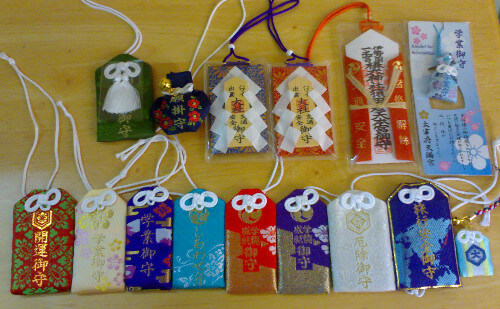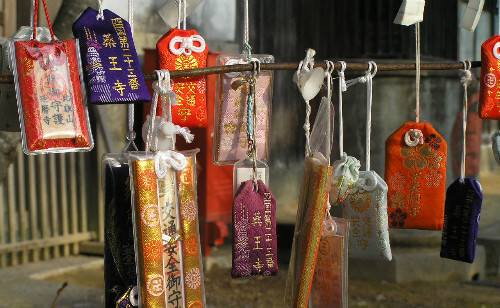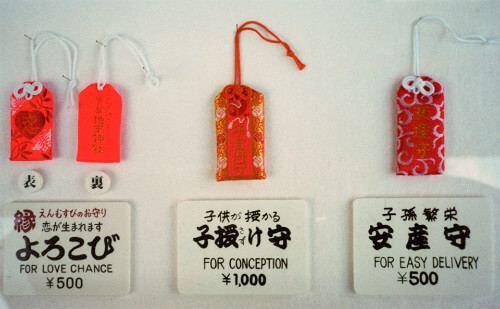Omamori: 3 Essentials when Buying Japanese Amulets
For those unfamiliar with the term, “omamori” (literally “protection”) are amulets sold in shrines and temples throughout Japan, which locals usually buy one at the beginning of a new year. Omamoris are believed to be a part of the shrines and temples’ gods. Thus, they supposedly grant people with “protective powers”. While their effectiveness compared to bulletproof vests or other more conventional items aside, they are a symbol of blessings. So, what do you have to keep in mind when buying one for your loved ones?
1. What are the omamori types?

Like the differences between Japan’s numerous Shinto shrines and Buddhist temples in Japan, omamoris come in different sizes, shapes and colours with various functions. Some are believed to grant luck (開運, kaiun) while some prevent unpleasantness (厄除, yakuyoke). Others have specific blessings, including safety (安全, anzen), financial wealth (金運, kinun), or even academic results (学業, gakugyo)! (Remember to study just in case though!) The omamori’s function is stated explicitly on the packaging. But if you are unsure, helpful locals are always happy to offer you assistance if you ask politely!
2. Where are omamoris available?

Omamoris are not only available at main religious sites like Sensoji Temple. They can actually be found in most shrines and temples. Made by priests or monks to sell, they would generally set you back around 300 - 1500 yen (2.5 - 13 USD). Customised omamoris can also be purchased. Simply tell the priests or monks about what the omamori should protect against! However, the cost will likely be another 1500 yen. But “what if I am not going to be visiting a shrine,” you might ask. No worries! With their popularities as souvenirs, omamoris are now merchandised and sold throughout Japan. Still, some claim these are not as effective as the ones you buy from shrines and temples.
3. What to note about omamoris?

1. Traditional omamoris are only effective for a year! It is customary for locals to return their expired omamori to where they obtained it, but it is understandable that tourists do not follow the custom. However, if you are enthusiastic enough, you can always return the omamori by mail. Only remember to notify the receiver by writing that you are returning an expired omamori, and they will handle it for you.
2. Do not open your omamoris — the lucky charms are so lovely that one can hardly hold back the thought of finding what’s in them. Actually, there is normally a piece of paper with the name of the god or that of the shrine/temple which is believed to be a medium to direct the god’s power from another realm to you. By opening the omamori, one loses the medium and hence the god’s blessings.
3. The above rules — they don’t apply to commercial omamoris! As omamoris became popular among the locals, industries began manufacturing special and innovative omamoris which gradually turned omamoris into a more casual item with interesting appearances and practically no restrictions, so don’t worry about the rules if you want to buy some for your friends and family! After all, it’s all about believing that good things would eventually happen!